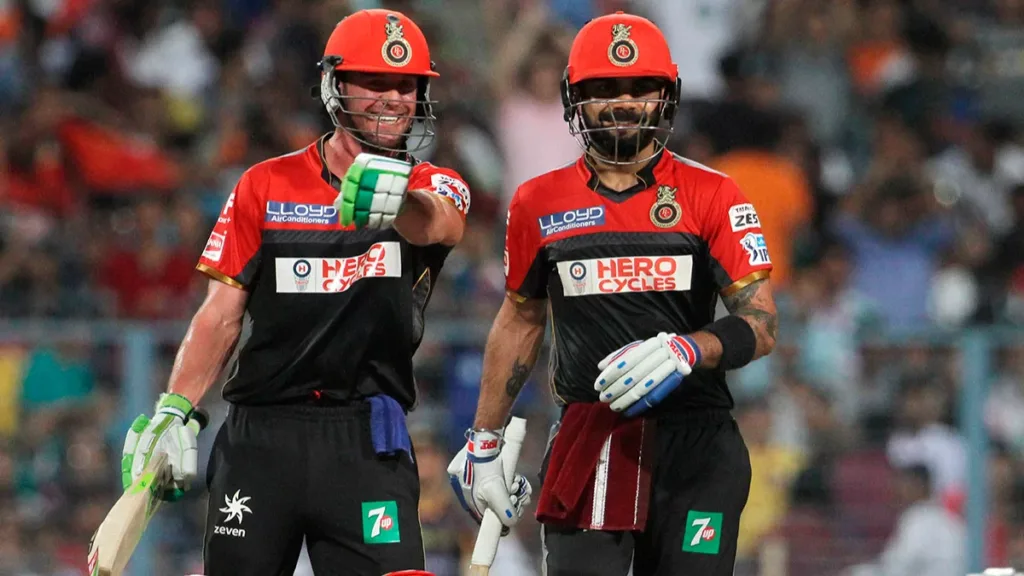Follow-On Rule Decision Calculator
Introduction to Follow-On Rule in Cricket
If you have ever wondered what "follow-on" means in cricket, you are not alone. It is a rule only used in Test cricket matches. Here is how it works: If the team batting first scores more than 200 runs than the other team after both teams have batted once, they can make the other team bat again right away.
The follow-on rule is one of the interesting parts of Test cricket that can confuse new fans and even some casual followers. It is a rule only used in Test matches, the longest and oldest type of cricket game, and it is not used all the time.
Let's look into this rule more and understand when and how it's used. When used well, the follow-on rule gives a big advantage to the team that enforces it. But there are also some things to consider, which we'll talk about more.
Table of Contents
What is Follow On Rule in Test Cricket?
In Test cricket, only the team that bats first can enforce the follow-on rule. This happens when the team batting second scores significantly fewer runs in their first innings compared to the first team. When the follow-on rule is enforced, the opposing team has to bat again right away.
Usually, in a two-innings match, the sequence is: first team bats, second team bats, first team bats again, and then the second team bats again. But with the follow-on rule, it changes to: first team bats, second team bats, follow-on is enforced, second team bats again, and then the first team bats.
Enforcing the follow-on boosts the confidence of the team doing it, as they can watch the opposing team bat again while still trying to chase their first innings score. The decision to enforce the follow-on is made by the captain of the first team and communicated to the umpire and the opposing captain.
By enforcing the follow-on, the chances of a draw in a five-day match decrease because the second team's innings is completed sooner, and the first team can start chasing the target right away. Sometimes, if the opposing team's combined scores from both innings are still lower than the first team's first innings score, the first team wins without batting again, making the Test match shorter. Follow-on rules are typically used in matches where each team gets to bat twice, like in domestic first-class cricket and Test matches in international cricket. According to Law 14 of the Marylebone Cricket Club (MCC):
“In a two-innings match of 5 days or more, the side which bats first and leads by at least 200 runs shall have the option of requiring the other side to follow their innings.”
The rule mentioned above applies specifically to Test cricket, which is the highest level of international cricket. However, for lower-level matches like first-class and lower divisions, the targets are different. Another part of the rule, clause 14.1.2, sets the minimum runs needed for matches of shorter durations:
- 150 runs for matches lasting 3 or 4 days;
- 100 runs for 2-day matches; and
- 75 runs for 1-day matches.
If the team batting second is behind by at least the minimum runs specified, the opposing team can choose to enforce the follow-on. But it's not mandatory to do so; it's often a tactical decision. Factors like the time left in the match, the workload of the bowlers, and the pitch and weather conditions influence this decision. For example, if rain is forecasted for the following days, enforcing the follow-on might be more likely.
The minimum runs required can change if the game is delayed by one or more days. In such cases, clause 14.3 states that the minimum runs needed for enforcing the follow-on are adjusted based on the remaining days in the match.
It is up to the captain of the first team whether to enforce the follow-on, considering factors like weather, time left in the match, the fitness of their bowlers, and the strengths and weaknesses of the opposing team.
How to Calculate Follow-On Rule in Test Cricket?
To calculate the follow-on in Test cricket, follow these steps:
1. Find the Lead: Calculate the lead by subtracting the runs scored by the team batting second in their first innings from the runs scored by the team batting first in their first innings.
Example:
- Team A scores 400 runs in their first innings.
- Team B scores 250 runs in their first innings.
- Lead = 400 - 250 = 150 runs.
2. Compare with Threshold: Check if the lead obtained in step 1 meets the minimum requirement for enforcing the follow-on. In Test cricket, the typical threshold is 200 runs.
Example:
- Lead = 150 runs (from step 1)
- Minimum required lead = 200 runs
Since the lead (150 runs) is less than the minimum required lead (200 runs), the follow-on cannot be enforced in this example.
3. Decision Making: If the lead meets or exceeds the minimum threshold, the captain of the team batting first has the option to enforce the follow-on or bat again.
Example (continued):
- Lead = 250 runs (updated)
- Minimum required lead = 200 runs
Since the lead (250 runs) is greater than the minimum required lead (200 runs), the team batting first has the option to enforce the follow-on.
4. Notify the Umpire: If the decision is made to enforce the follow-on, the captain of the team batting first communicates this decision to the umpire and the opposing captain.
Example (continued):
- The captain of Team A notifies the umpire and the captain of Team B that they will enforce the follow-on.
5. Opposing Team Bats Again: If the follow-on is enforced, the opposing team (Team B) must bat again immediately, skipping the second innings of the team that batted first.
Example (continued):
- Team B begins their second batting innings immediately after their first innings, as Team A has enforced the follow-on.
6. Continue Match: The match continues with Team B batting again, and Team A will have the opportunity to bat again after Team B's second innings.
By following these steps, you can calculate and understand the follow-on in Test cricket matches.
Advantages of Follow on Rule
The follow-on rule gives a big advantage to the team batting first, putting them in a dominant position where winning becomes highly likely. Its main aim is to eliminate the possibility of a draw and add more pressure on the opposing team, especially since they've already struggled with batting once.
For bowlers, enforcing the follow-on boosts their confidence and form significantly. They're thrilled by their success and eager to dismiss the opposition batsmen again. They have the responsibility to take 10 wickets once more, and if they can limit the opposing team to a score below 200, they might even secure the win single-handedly.
Enforcing the follow-on also has a psychological impact. It shows that the team batting first is taking an aggressive approach and is determined to win the match at any cost. This strategy puts the opposition on the defensive, which is exactly what the follow-on rule intends to achieve.
Disadvantages of Follow on Rule
While enforcing the follow-on rule has clear advantages, there are also some drawbacks to consider. One major downside is that bowlers may become tired more easily and might not perform as well in the second innings as they did in the first.
Bowlers need to be extremely fit, both physically and mentally, to bowl around 20 overs per innings. When enforcing the follow-on, they have to bowl consecutively, which can lead to fatigue. This fatigue could allow the batting team to gain momentum and start scoring more runs, staging a comeback.
Moreover, enforcing the follow-on means that the team enforcing it will have to bat last. This may not be a wise decision in many cases, especially considering the wear and tear of the pitches in the final days of a Test match. As the pitch deteriorates, it becomes more favorable for the opposition bowlers. Batting last to win a Test match can often be challenging due to widening cracks and a deteriorating surface.
Real Life Example on Follow on Rule
Australia batted first in the second Test and scored 445 runs. India, in response, managed only 171 runs, with V. V. S. Laxman scoring 59 runs and Rahul Dravid contributing 25 runs. Harbhajan Singh's outstanding bowling performance, including a hat-trick of Ricky Ponting, Adam Gilchrist, and Shane Warne, stood out for India.
Australia, feeling confident with their lead, enforced the follow-on. This meant that India had to bat again immediately after their first innings.
In the second innings, India showed remarkable resilience, scoring 657 runs for the loss of 7 wickets, securing a lead of 383 runs. They declared their innings just before lunch on the final day. Australia, aiming for a draw, scored 161 runs for the loss of 3 wickets by tea.
However, Australia's fortunes took a dramatic turn when they lost five wickets for just eight runs in 31 balls. Eventually, Australia was dismissed for 212 runs in their second innings, handing India a victory by 171 runs. This win was India's largest margin of victory in their four Test victories.
It was a historic win for India, especially considering they had been asked to follow-on. This victory marked only the third time in cricket history that a team won a Test match after being enforced to follow-on.
The famous 2001 Test match between India and Australia in Kolkata's Eden Gardens is a prime example of a team winning after being asked to follow-on. Such occurrences have led cricket captains to reconsider their strategy of enforcing the follow-on, despite it often indicating which team is in control of the match.
Cricket Follow On Calculator Online Tool
In the realm of cricket analysis, having fast and reliable tools for calculating Follow-on in cricket is essential. To streamline this process for cricket fans, we are thrilled to unveil our Cricket Follow On Calculator Online Tool, right here on this page. This user-friendly tool is crafted to help you effortlessly calculate the Follow On rule for your preferred test tournament.
How to Use Our Calculator:
Using our Cricket Follow-On Rule Calculator is easy and straightforward:
- Enter the total runs scored by the team batting first in their first innings.
- Enter the total runs scored by the opposing team in their first innings.
- The calculator will automatically calculate the lead obtained by the team batting first and determine whether the follow-on can be enforced.
Specifications of Our Calculator:
- Simple Interface: Our calculator features an intuitive and user-friendly interface, making it accessible to cricket fans of all levels of expertise.
- Real-Time Calculation: The calculator provides real-time calculation of the lead obtained by the team batting first, allowing users to instantly determine whether the follow-on can be enforced.
- Customizable Threshold: Users can customize the threshold for enforcing the follow-on based on specific match conditions or preferences, providing flexibility and adaptability.
- Interactive Features: Interactive features such as tooltips and explanatory notes accompany the calculator, offering additional insights and explanations to enhance the user experience.
- Mobile Compatibility: Our calculator is optimized for mobile devices, ensuring seamless access and functionality across various platforms and devices.
If you are interested in more cricket calculators, Check out our batting strike rate calculator, duck-worth lewis calculator, run rate calculator, and batting average calculator.
FAQ's
What is lead required for follow-on?
The lead required for enforcing the follow-on in Test cricket is typically 200 runs or more. This means that if the team batting first establishes a lead of 200 runs or greater over the opposing team after the completion of the first innings, they have the option to enforce the follow-on, compelling the opposing team to bat again immediately. However, it's essential to note that the specific lead required for follow-on may vary depending on the rules and regulations of the cricketing body or tournament organizers.
How many runs do I need to avoid follow on in first class cricket?
In a three-day or four-day first-class (FC) match, the team batting second must trail by no more than 150 runs after the first innings to avoid the follow-on. However, for matches of shorter duration, such as two-day or one-day matches, this criterion is reduced to 100 runs and 75 runs, respectively.
Who decides to enforce the follow on rule for a team?
The decision to enforce the follow-on rule is made by the captain of the team batting first. They consider several factors before making this decision, including weather conditions, time remaining in the match, and the condition and fitness of the bowlers.



